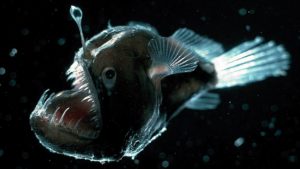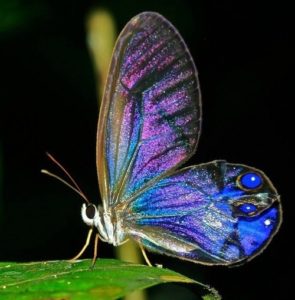Who glows there?
From recycling the Sun’s rays to complex chemical reactions, there are various types of glow
Bioluminescence: Creating light from darkness
 The is used to describe light than is produced by a chemical reaction inside an organism. The vital substance in this reaction is luciferin, which can react with oxygen to produce light. The process is aided by the enzyme luciferase, but doesn’t need an external source of light, which is why deep-sea creatures like anglerfish can use it to lure their prey. There are at least four different types of luciferin in animals, each with a corresponding luciferase. Some bioluminescent species rely on a supply of these molecules within their diet, as they are unable to create them.
The is used to describe light than is produced by a chemical reaction inside an organism. The vital substance in this reaction is luciferin, which can react with oxygen to produce light. The process is aided by the enzyme luciferase, but doesn’t need an external source of light, which is why deep-sea creatures like anglerfish can use it to lure their prey. There are at least four different types of luciferin in animals, each with a corresponding luciferase. Some bioluminescent species rely on a supply of these molecules within their diet, as they are unable to create them.
Fluorescence: Simple light exchange
 Unlike bioluminescence, this process relies on an external light source. The light is absorbed by atoms and re-emitted again almost immediately. If the light source disappears, so does the fluorescence. While being reflected, the photons lose energy, meaning the visible glow differs in colour to the light source. Butterfly wings contain fluorescent pigments that intensify their colour, to attract mates or repel predators.
Unlike bioluminescence, this process relies on an external light source. The light is absorbed by atoms and re-emitted again almost immediately. If the light source disappears, so does the fluorescence. While being reflected, the photons lose energy, meaning the visible glow differs in colour to the light source. Butterfly wings contain fluorescent pigments that intensify their colour, to attract mates or repel predators.
Phosphorescence: The light that lingers
 Like a glow-in-the-dark sticker, phosphorescent animals absorb light and use it to give off an eerie glow. The process is similar to fluorescence, but phosphorescent animals can ‘save up’ light and release it slowly. Like fluorescence, this depends on a light source, such as the Sun. However, the electrons become excited to a higher degree than in fluorescence and they release light slowly, at a lower intensity. Animals like jellyfish absorb light at the water’s surface, giving them a glow that alarms and repels predators.
Like a glow-in-the-dark sticker, phosphorescent animals absorb light and use it to give off an eerie glow. The process is similar to fluorescence, but phosphorescent animals can ‘save up’ light and release it slowly. Like fluorescence, this depends on a light source, such as the Sun. However, the electrons become excited to a higher degree than in fluorescence and they release light slowly, at a lower intensity. Animals like jellyfish absorb light at the water’s surface, giving them a glow that alarms and repels predators.















